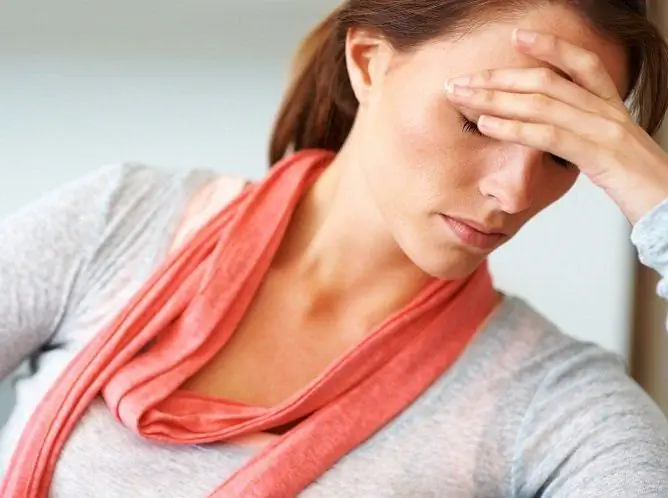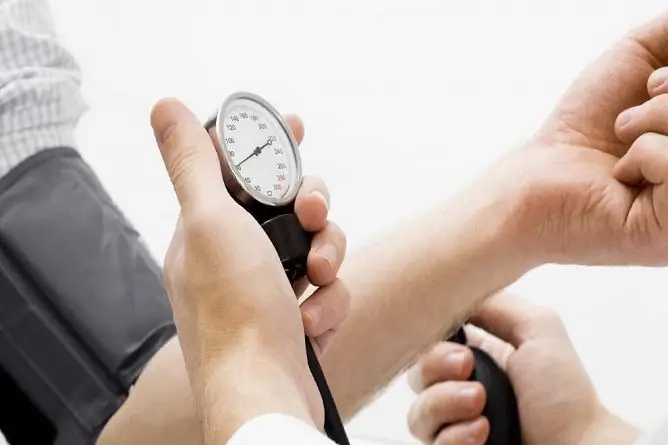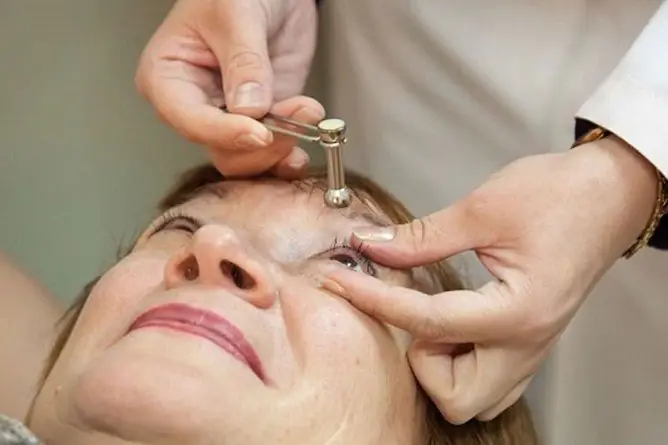How to normalize blood pressure at home without medication
The content of the article:
- What is blood pressure
- Why does blood pressure rise or fall
- How to normalize blood pressure at home
- How to normalize high blood pressure in the long term
- Video
There are several ways to normalize blood pressure at home without medication: by performing simple exercises, performing elementary physiotherapy procedures, or using decoctions or infusions of herbal preparations. You can also quickly stabilize blood pressure (BP) with the help of special medications.
It is possible to independently normalize blood pressure not only urgently when its sudden spasmodic increase is recorded, but also in the long term with the help of daily procedures. Some patients manage to permanently lower blood pressure by changing their lifestyle and mode of activity, eliminating risk factors for hypertension.

What is blood pressure
This medical term denotes the force with which the blood presses from the inside on the walls of arterial vessels: the higher the pressure inside the vascular bed, the larger the number is shown on the dial of the manometer. Normal blood pressure ranges from 100-110 / 65-70 to 139/89 millimeters of mercury (mm Hg or mm Hg).
The first figure reflects the magnitude of the pressure in the arteries at the time of contraction of the heart - systole. It is called, respectively, "systolic blood pressure" (or systolic blood pressure), but in everyday life it is often referred to as "upper", the name "heart" is also found. The second digit is fixed at the moment of complete relaxation of the heart, the pressure in the vascular bed is minimal - this is diastolic pressure (DBP), which is also called lower (vascular, renal).
If blood pressure is fixed at values when the lower threshold of the norm has not been overcome (less than 100-100 and 65-70 mm Hg), they speak of hypotension. If the measurement indicates pressure values of more than 140/90 mm Hg. Art. - there is reason to suspect the presence of arterial hypertension.
Both cases require intervention in order to normalize pressure. With hypotension, the delivery of oxygen and nutrients to organs and tissues suffers, and with hypertension, the load on them increases, there is a risk of developing cardiovascular complications.
Why does blood pressure rise or fall
Blood pressure numbers may change against the background of any disease or without connection with the underlying pathology.
If the deviation of blood pressure from the norm is a complication of hormonal diseases, diseases of the central nervous system or neoplasms, for example, of the thyroid gland or adrenal glands, such hypo- or hypertension is called secondary. Curing the underlying disease in this case will help stabilize the blood pressure.
If the change in pressure is not associated with any pathology, it is called primary or essential. Essential hyper- or hypotension is a consequence of the breakdown of internal regulatory mechanisms. The treatment of such a pathology is more difficult, since it is almost impossible to establish the root cause, and therefore to eliminate it. However, lifestyle changes and risk factors can help keep BP numbers under control.
Major risk factors for hypertension:
- long experience of smoking;
- low level of physical activity;
- abuse of alcoholic beverages;
- a diet rich in spicy, spicy foods, fatty, fried, smoked, overly salty foods;
- overweight;
- persistent psycho-emotional overload;
- chronic physical and intellectual overstrain.
Risk factors for developing hypotension:
- hereditary predisposition;
- prolonged stress;
- excessive physical and mental stress;
- head trauma;
- the presence of chronic, constantly recurrent diseases of the nasopharynx;
- suffered severe infections in childhood;
- professional harm.
How to normalize blood pressure at home
If high blood pressure is registered, the following measures can be taken:
- Consume an herbal drink or collection. Green tea, hibiscus, milk oolong, broth of mint or lemon balm have an active hypotensive effect. You can add honey to the drink, you need to drink it a little warm or cooled down (with high blood pressure, hot drinks are not recommended).
- Drink a glass of pomegranate juice.
- Massage the neck area, nape and shoulder girdle. At the same time, it is important not to make excessive efforts: the effect should be soft, relaxing.
- Apply a compress with table vinegar to the plantar surface.
- Take a hot foot bath. Feet up to the ankles are placed in a container with heated water, while as it cools, it is necessary to add small portions of boiling water.
- Apply mustard plasters to the back of the head or calf muscles.
Feedback from patients testifies to the sufficient effectiveness of the listed techniques. The normalization of pressure usually occurs within 20-30 minutes. These simple procedures are indispensable for treating hypertension at home, although some of them can also be used in the workplace or when traveling.
Some patients note an abrupt increase in blood pressure before a medical examination, in a doctor's office or during any medical manipulations, while the rest of the time the pressure figures are within normal limits. This is the so-called white coat hypertension, caused by psychological discomfort when visiting a medical facility. There is no need to correct it: the numbers will normalize on their own within a few minutes.
It is not always possible to normalize pressure with folk remedies. If, against the background of ongoing activities, hypertension persists for half an hour or an hour or the pressure continues to increase, you should immediately seek specialized medical help.
If the pressure is low, there are also simple ways to normalize it:
- Drink a strong cup of tea or coffee.
- Eat a slice of chocolate. At the same time, it is dark chocolate with a high cocoa content that increases the pressure, milk does not have such an effect.
- Take a tonic: a drink containing taurine, adrenaline or caffeine, tincture of ginseng.
- Carry out water treatments with a contrast shower.
If low blood pressure cannot be normalized without taking special medications, you should seek medical help. Hypotension can be one of the symptoms of serious cardiovascular disease.
What will help if the pressure of a pregnant woman has dropped? Quite often during pregnancy, the so-called physiological hypotension develops. It is most pronounced in the first trimester and is associated with the restructuring of the circulatory system. However, if low blood pressure values cause discomfort to the expectant mother, are accompanied by a deterioration in well-being, or hypotension is fixed at critically low numbers - this should be reported to the treating doctor.
When the child's pressure rises or falls, it is not recommended to self-medicate. It is necessary to seek advice, even if the change in blood pressure was registered only once. It should be remembered that children have lower blood pressure than adults. Habitual indicators are established during adolescence.
In some patients, the pressure may be unstable: in this case, hypertension is replaced by hypotension. If it is either low or high, you should also not try to normalize the indicators yourself. In this case, the whole range of laboratory and instrumental studies is needed to establish the root cause of blood pressure lability.

If the pressure is either low or high, then you should not try to treat it yourself, you need to consult a doctor
If episodes of elevation or decrease in pressure are systematically recorded for a long time, it is recommended to undergo an examination to identify the cause of hypo- or hypertension. After that, the doctor will recommend special procedures or pills, if necessary, appropriate prescriptions will be drawn up.
How to normalize high blood pressure in the long term
The key to stable and long-term normalization of blood pressure is lifestyle changes and the elimination of risk factors:
- reduction in excess body weight;
- refusal to use excessive doses of alcohol;
- to give up smoking;
- change in diet;
- control of the amount of salt and liquid consumed;
- introduction of dosed physical activity into the daily routine;
- elimination of stress factors;
- carrying out restorative activities.
Video
We offer for viewing a video on the topic of the article.

Olesya Smolnyakova Therapy, clinical pharmacology and pharmacotherapy About the author
Education: higher, 2004 (GOU VPO "Kursk State Medical University"), specialty "General Medicine", qualification "Doctor". 2008-2012 - Postgraduate student of the Department of Clinical Pharmacology, KSMU, Candidate of Medical Sciences (2013, specialty "Pharmacology, Clinical Pharmacology"). 2014-2015 - professional retraining, specialty "Management in education", FSBEI HPE "KSU".
Found a mistake in the text? Select it and press Ctrl + Enter.







